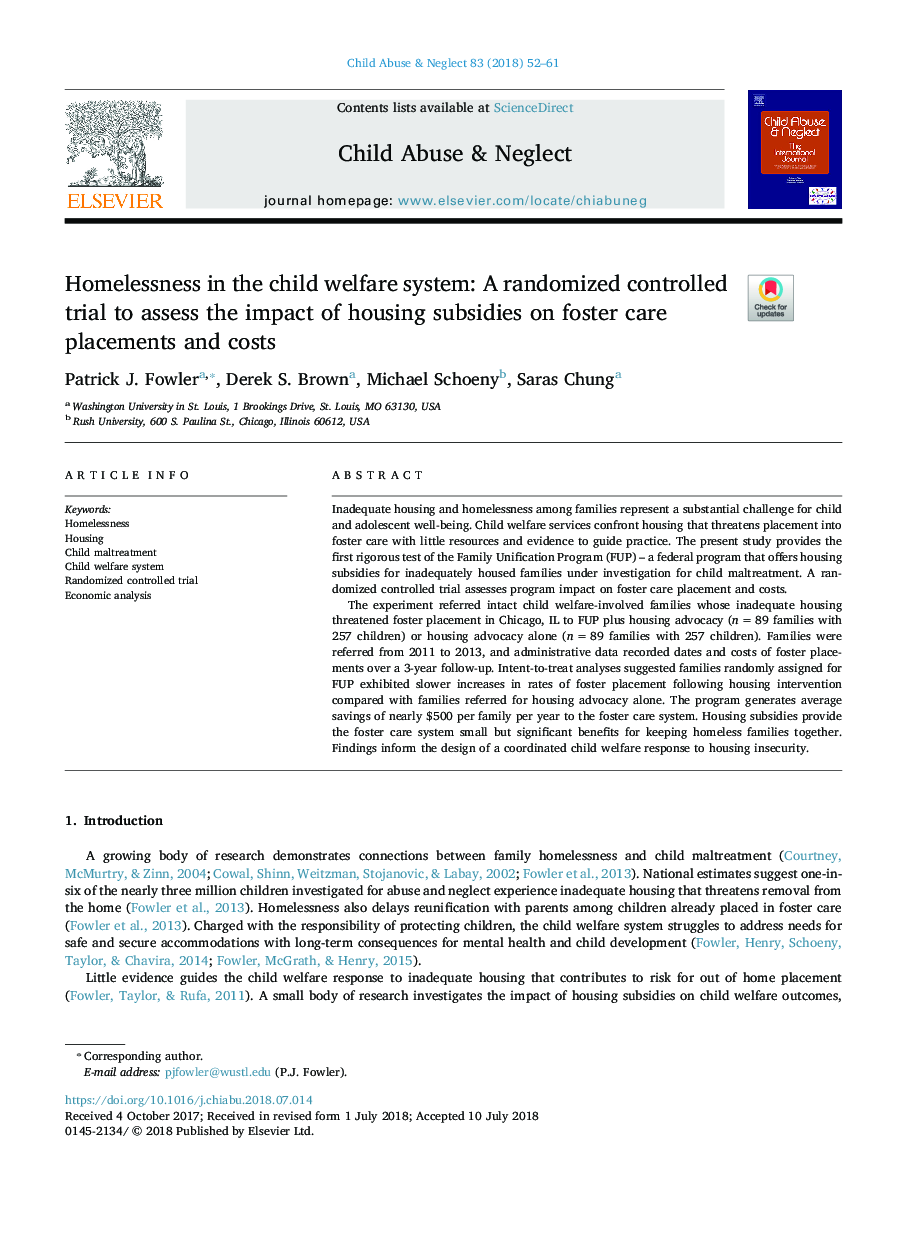| Article ID | Journal | Published Year | Pages | File Type |
|---|---|---|---|---|
| 6831741 | Child Abuse & Neglect | 2018 | 10 Pages |
Abstract
The experiment referred intact child welfare-involved families whose inadequate housing threatened foster placement in Chicago, IL to FUP plus housing advocacy (nâ=â89 families with 257 children) or housing advocacy alone (nâ=â89 families with 257 children). Families were referred from 2011 to 2013, and administrative data recorded dates and costs of foster placements over a 3-year follow-up. Intent-to-treat analyses suggested families randomly assigned for FUP exhibited slower increases in rates of foster placement following housing intervention compared with families referred for housing advocacy alone. The program generates average savings of nearly $500 per family per year to the foster care system. Housing subsidies provide the foster care system small but significant benefits for keeping homeless families together. Findings inform the design of a coordinated child welfare response to housing insecurity.
Keywords
Related Topics
Health Sciences
Medicine and Dentistry
Perinatology, Pediatrics and Child Health
Authors
Patrick J. Fowler, Derek S. Brown, Michael Schoeny, Saras Chung,
